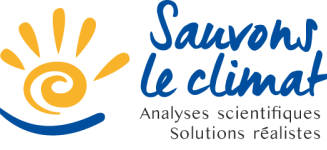Which Energy Sources to save the climate ?
At the COP25 held in Madrid in December 2019, Sébastien Richet of GISOC (Global Initiative to Save Our Climate, created by members of Save the Climate) presented a poster in which the results of a scientific study on the element limitation factors till 2050 relative to various carbon-free energy sources are summarized. This study concludes that only nuclear power with reprocessing and Gen-IV reactors, with a complement of hydraulic power and bio-energy based on wood where applicable, can cope with the most demanding scenarios.
Overall review of the energy contributions for the 1.5 and 2 degrees scenarios. What about the Sustainable Development Goals?
Sustainability of the energy sources versus raw materials demand till 2050
Global Initiative to Save Our Climate
- Background and Goal of the present work
Most of the currently available scenarios for the IPCC 1.5°C and 2°C pathways show a large decrease of energy consumption and an extensive use of intermittent sources with storage capabilities while a few others entail an increase or a stagnation of consumption associated with condensed adaptable energy sources.
These considerations are extremely important as they govern the type of strategy to put forward within the two IPCC pathways. Trying to sort out and analyse all the possible human made contributions to energy generation would be beyond the scope of our paper. Therefore, we will address the issues from a more global perspective, using input from the most recent of the numerous studies already done on the subject.
First, we have to stick to our goal which is to help politicians, decision makers and other people in charge avoid some of the potential traps associated with various strategies while ensuring that several related Sustainable Development Goals (SDGs) are achieved, at least up to the end of the century and possibly beyond.
Our strategy is to first determine envelopes, i.e. to establish limits beyond which the likelihood of not achieving the required SDGs is high.
The related SDGs retained in this paper are 1 “No poverty”, 2 “Zero hunger”, 6 “Clean water and sanitation”, 7 “Affordable and clean energy”, 8 “Decent work and economic growth”, 9 “Industrial innovation and infrastructures”, 12 “Responsible consumption and production”, and 13 “Climate action”.
....
Link to the complete pdf document : Poster GISOC
To know more about GISOC : http://gisoc.srweb.biz/gisoc/gisoc.html




